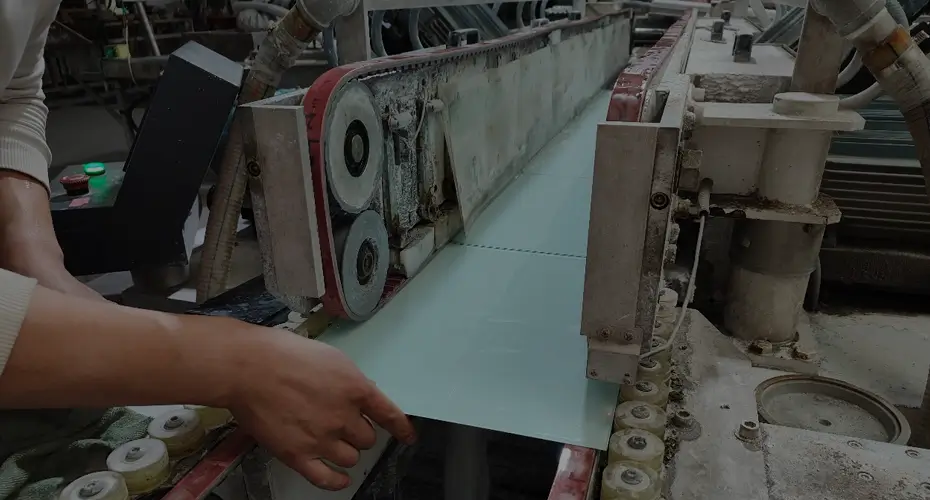Dec . 24, 2024 18:17 Back to list
laminated glass sheets
Understanding Laminated Glass Sheets Benefits and Applications
Laminated glass has become a popular choice in contemporary architecture and design due to its unique combination of aesthetic appeal, safety, and functionality. Comprising two or more panes of glass bonded together with an interlayer—usually made from polyvinyl butyral (PVB) or ethylene-vinyl acetate (EVA)—laminated glass sheets provide numerous advantages that make them ideal for a variety of applications.
Enhanced Safety and Security
One of the primary benefits of laminated glass is its inherent safety features. In the event of breakage, the interlayer holds the glass fragments together, significantly reducing the risk of injury from flying shards. This feature is particularly advantageous in locations prone to vandalism or extreme weather conditions, such as hurricanes or tornadoes. Laminated glass is often employed in storefronts, schools, and public buildings, where the protection of occupants is crucial.
Moreover, laminated glass can act as a deterrent against break-ins and burglaries. The additional layer makes it more challenging for intruders to gain entry, as it requires significant effort to break through. This characteristic has led to its increased use in residential projects, including homes showcasing large glass facades or those in high-crime areas.
Sound Insulation
Another significant advantage of laminated glass is its superior sound-dampening capabilities. The interlayer not only provides strength and safety but also helps to reduce noise transmission between the interior and exterior environments. For urban areas where noise pollution can be a concern, laminated glass can provide a quieter and more serene indoor atmosphere. This feature makes it the material of choice for offices located in bustling city centers, as well as in luxury residential developments seeking a peaceful ambiance.
Energy Efficiency
Laminated glass can also contribute to energy efficiency. With the right combination of glass types and coatings, laminated glass can provide excellent thermal insulation. This characteristic aids in controlling interior temperatures, which can result in lower heating and cooling costs. Incorporating laminated glass into building designs allows architects to create energy-efficient structures that adhere to modern sustainability standards.
laminated glass sheets

When laminated glass is combined with low-emissivity (low-e) coatings, it can significantly enhance a building's performance by reflecting heat back to the interior during winter and minimizing heat gain during summer. This dual action helps maintain a comfortable indoor climate throughout the year.
Aesthetic Versatility
Aesthetically, laminated glass offers extensive design flexibility. It can be manufactured in various colors, textures, and even printed patterns, allowing architects and designers to explore creative possibilities that were previously unattainable with traditional glass. Such versatility makes laminated glass an ideal choice for artistic installations and innovative architectural designs.
Moreover, the ability to integrate interlayers that are tinted or frosted gives designers options that enhance privacy without sacrificing natural light. This feature is particularly useful in commercial spaces, such as offices and retail locations, where privacy may be required without completely blocking visibility.
Applications Across Industries
The application of laminated glass sheets spans various industries. In automotive manufacturing, laminated glass is used in windshields because it provides safety by preventing shattering in accidents. In the construction industry, laminated glass finds use in facades, skylights, and atriums, enhancing both safety and aesthetics.
In residential settings, homeowners often choose laminated glass for windows, doors, and even shower enclosures, taking advantage of its safety and sound insulation benefits. Besides, its appealing appearance can enhance the overall aesthetic of the home while providing peace of mind.
Conclusion
In summary, laminated glass sheets are a revolutionary product that merges safety, aesthetics, sound insulation, and energy efficiency. Their diverse applications across various domains—from residential homes to commercial buildings and automotive manufacturing—highlight their versatility and practical value. As architects and designers continue to push the boundaries of modern design, laminated glass will undoubtedly play a pivotal role in shaping the structures of the future, balancing form and function while addressing the needs for safety and sustainability. Whether you are an architect, builder, or homeowner, laminated glass offers solutions that marry innovation with practicality, ensuring spaces that are not only visually pleasing but also safe and energy-efficient.
-
Safety and Style with Premium Laminated Glass Solutions
NewsJun.24,2025
-
Reinvents Security with Premium Wired Glass
NewsJun.24,2025
-
Premium Float Glass Line for Modern Architecture
NewsJun.24,2025
-
Low Emissivity Glass for Energy-Efficient Architecture
NewsJun.24,2025
-
High-Performance Insulated Glass Solutions for Modern Architecture
NewsJun.24,2025
-
Elevates Interior Style with Premium Silver Mirror
NewsJun.24,2025
Related PRODUCTS














